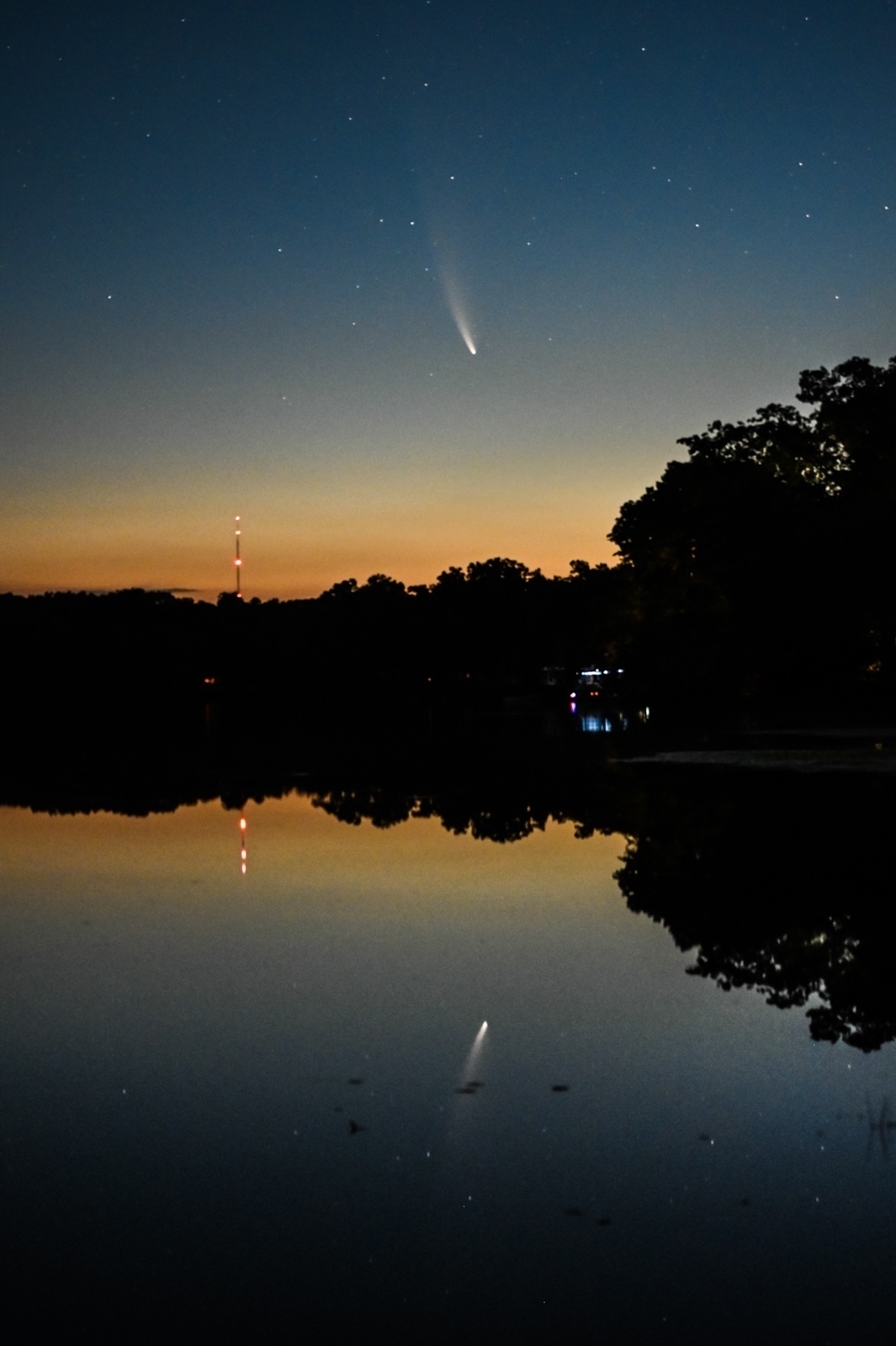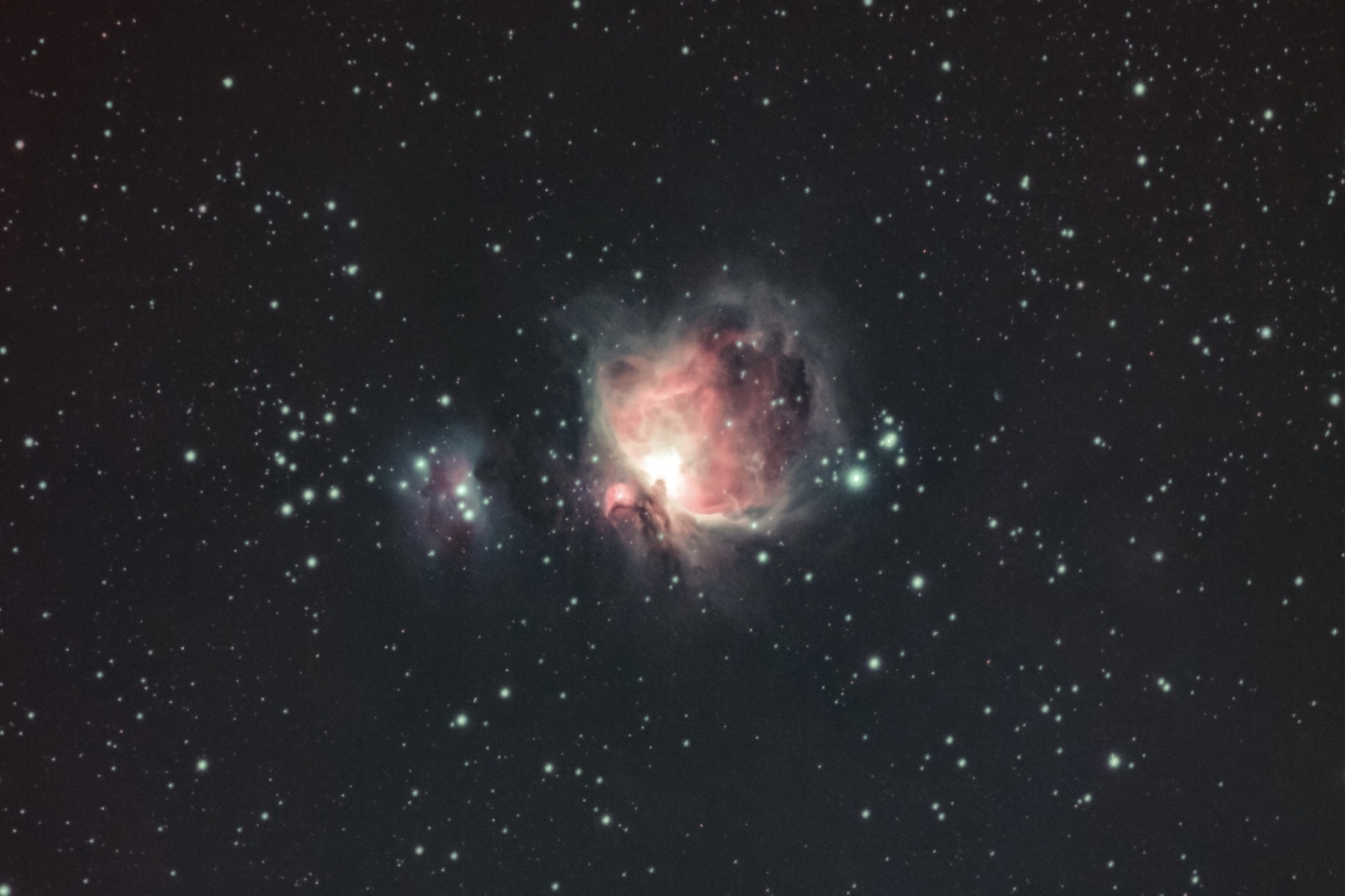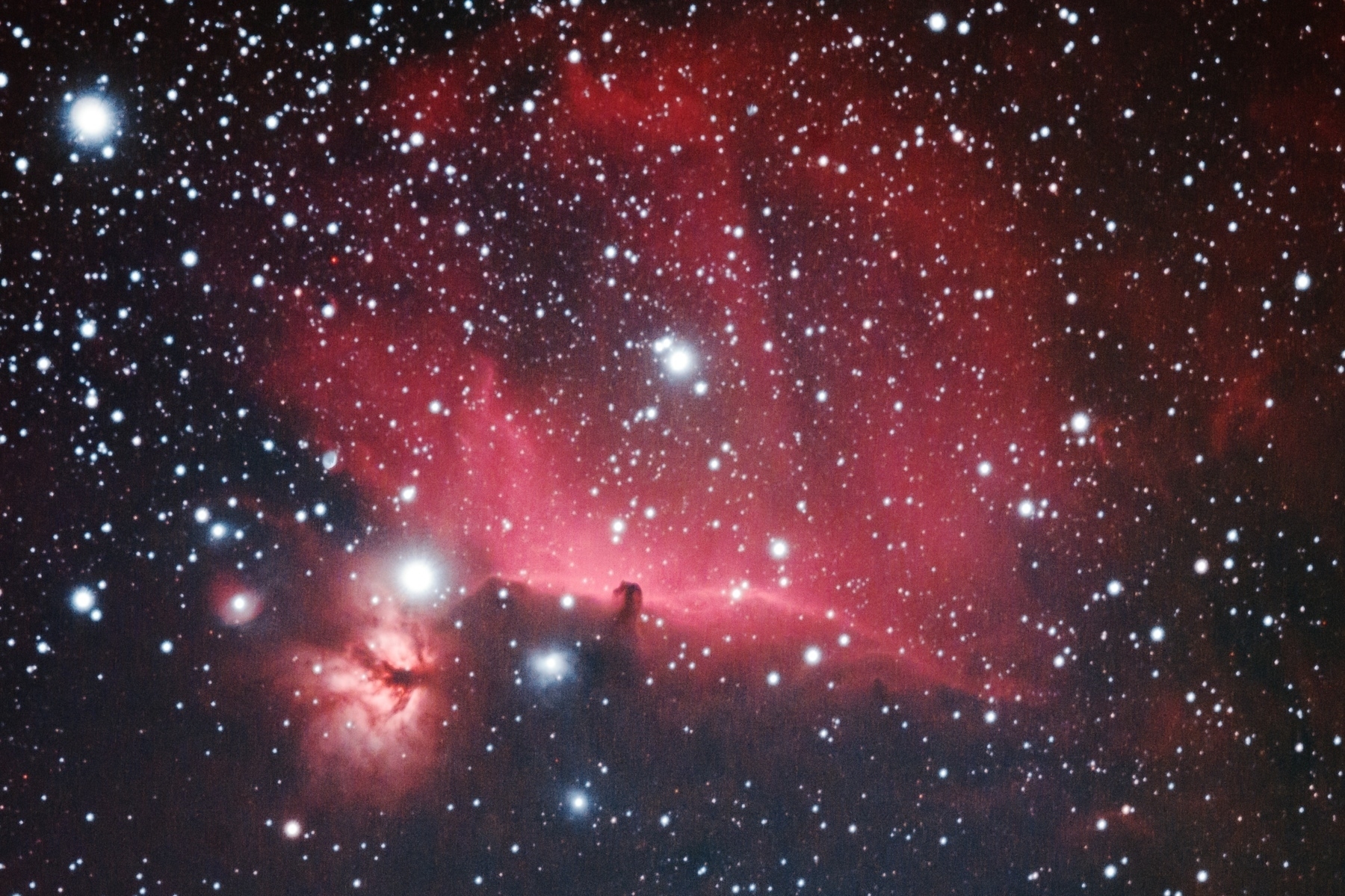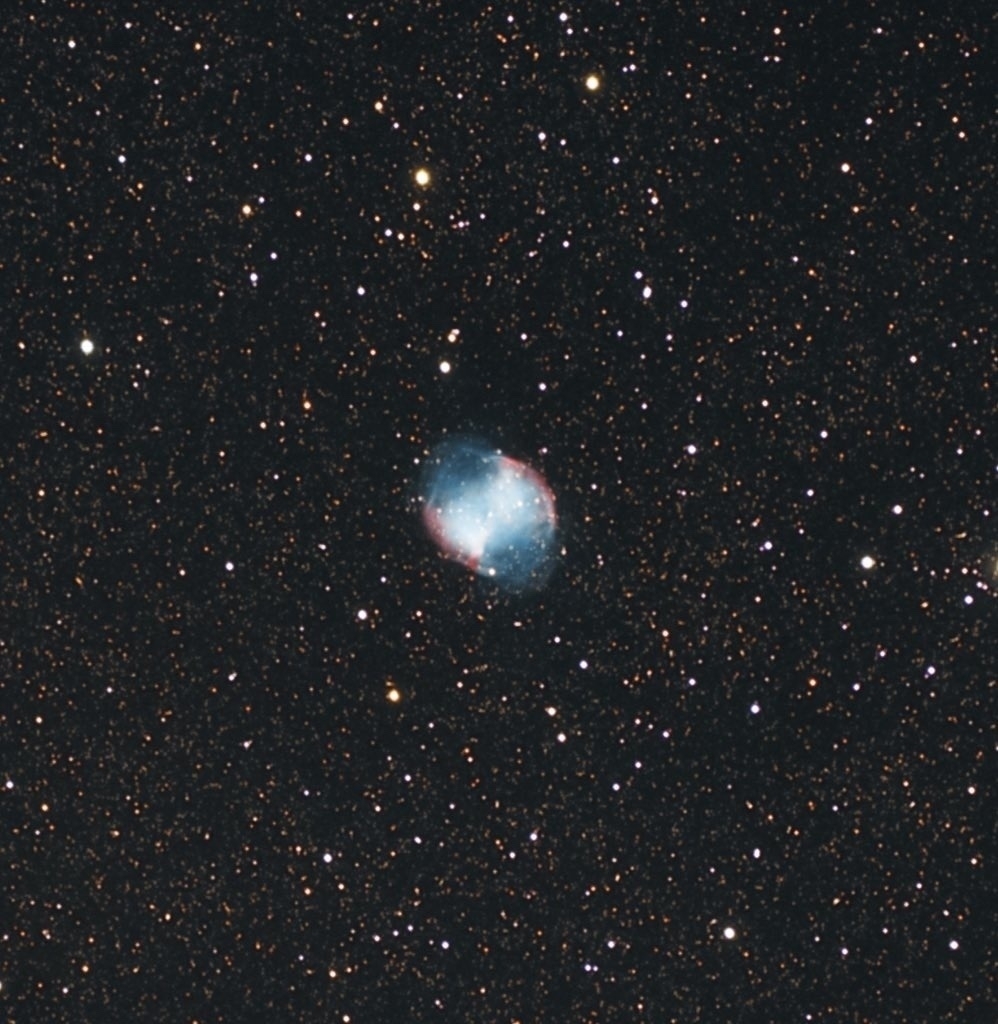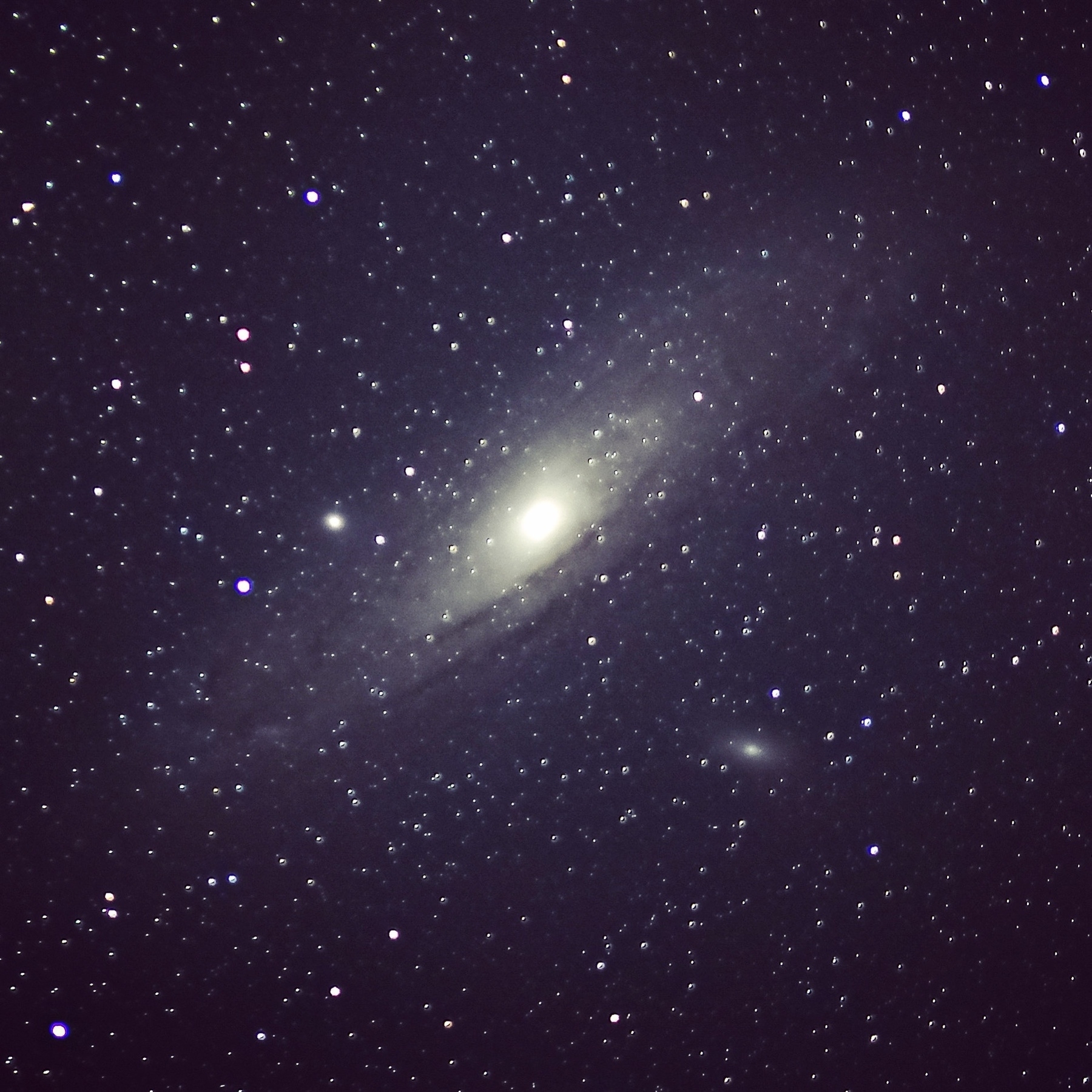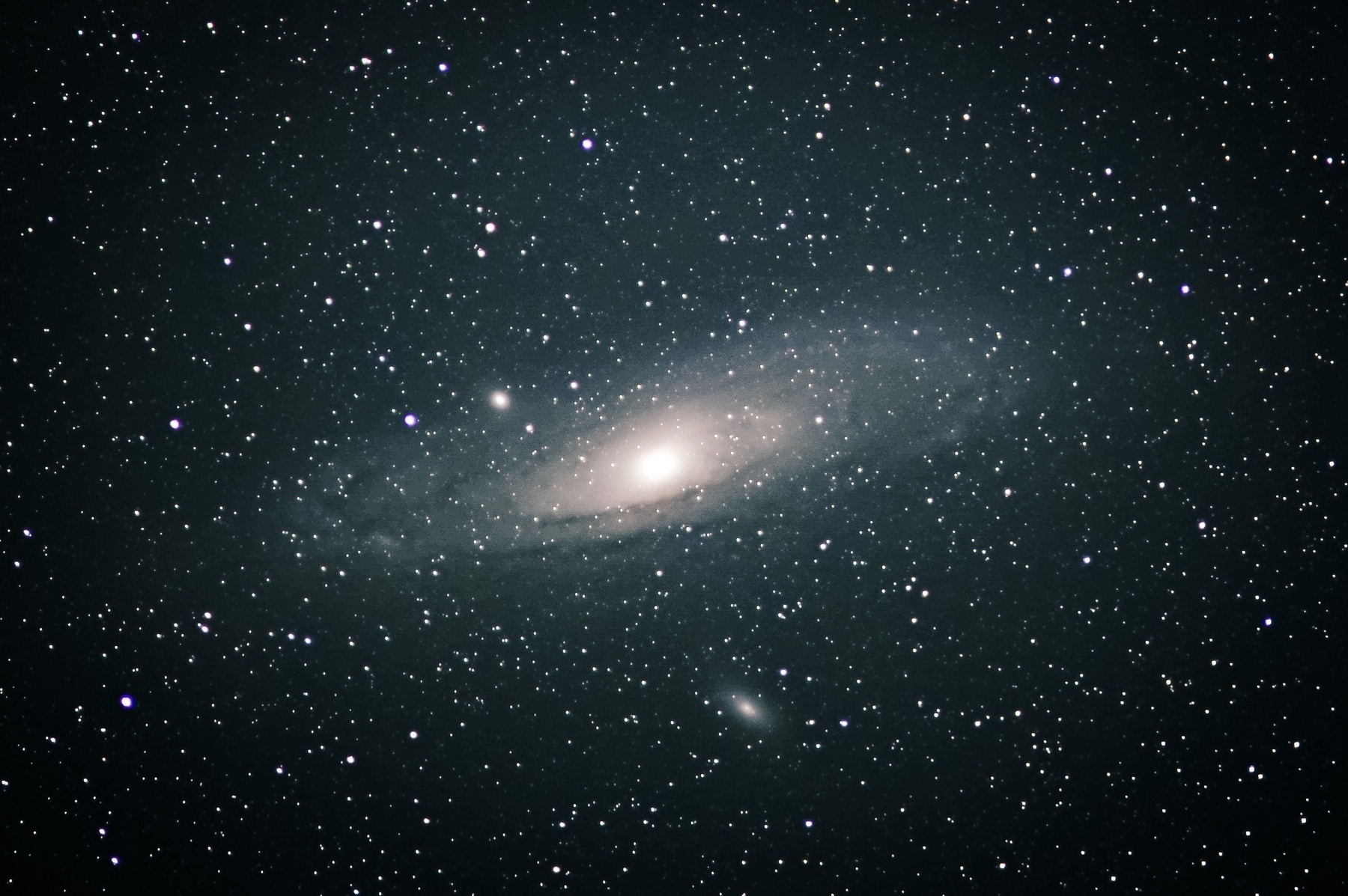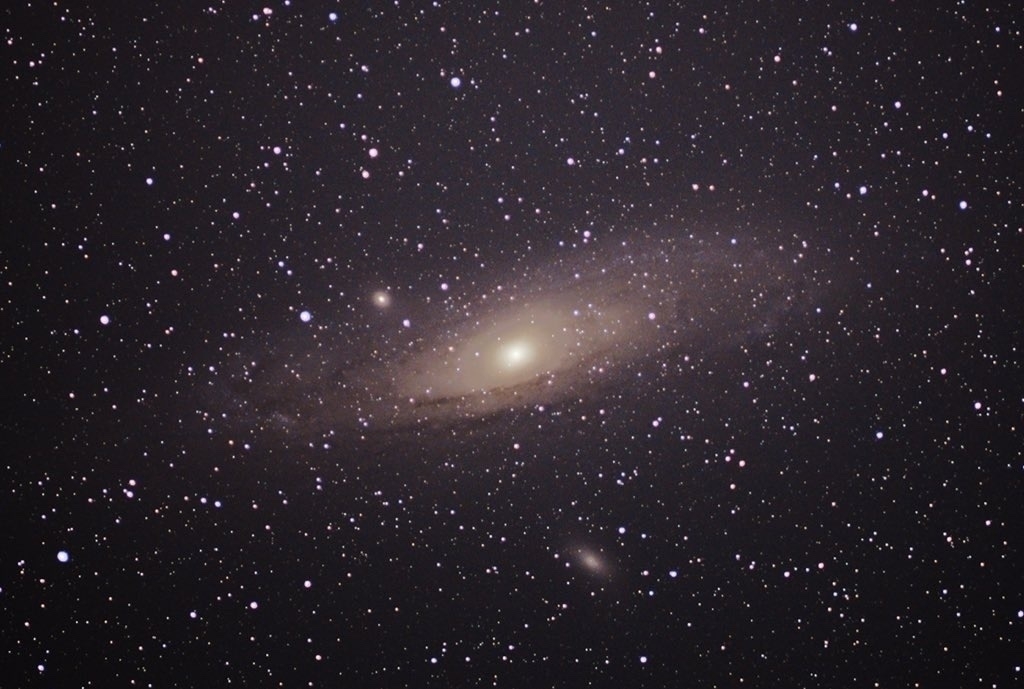astrophotography
M81 and M82

Reprocessed data from June 2021 for Bode's galaxy (M81) and Cigar galaxy (M82) from Ursa Major. These galaxies are about 12 million light years away and are a part of our local group of galaxies along with Andromeda galaxy and Milky Way galaxy. This image is a short exposure of only about 30 minutes (18 x 99 secs) taken with Nikon Z6 attached to William Optics ZenithStar 61. Hoping to get longer exposures next time.
Nebulae in Orion
January has been a very cloudy and rainy/snowy month. On a couple of clear nights, there was a big bright moon making it hard to do any deep sky imaging. Finally, last week, we had a clear dark night. I was able to capture two different images in the Orion constellation.
Orion and Running man nebulae
The Orion Nebula (M42) is one of the brightest nebula that is visible to naked eye. It is about 1300 light years away and is a region of massive star formation closest to Earth. There are about 700 stars in various stages of formation within the nebula. (Text paraphrased from Wikipedia.) William Optics ZS61 with Optolong LeNhance narrowband filter
William Optics ZS61 with Optolong LeNhance narrowband filter
 Nikon-Z6 60 x 1min subs; processed with Siril and Photoshop
Nikon-Z6 60 x 1min subs; processed with Siril and Photoshop
Flame and Horse head nebulae
The Horse head nebula (Barnard 33) is about 1300 light years away and is one of the most recognizable dark sky object. As a young boy interested in Astronomy, I was very impressed by Horse head nebula. It is a faint object and I couldn't view with the amateur telescope that I had. At that time I couldn't have imagined that some day I'll be able to take a photo of Horse head nebula. William Optics ZS61 with Optolong LeNhance narrowband filter
William Optics ZS61 with Optolong LeNhance narrowband filter
 Nikon-Z6 41 x 3min subs; processed with Siril and Photoshop
Nikon-Z6 41 x 3min subs; processed with Siril and Photoshop
While capturing these light frames, other calibration frames (bias, dark, and flat) were also collected but, not used while processing to get the images posted here. Planning to reprocess with those calibration frames and see how much difference they make. I also have to learn techniques for star reduction. As can be seen in these images, the stars are getting bloated while stretching the data to bring out the faint objects.
Sunspots on 20220112
Several sunspots can be seen in photos of the Sun on January 12th. After going through a trough over the last couple of years, the solar activity is on the upswing as the Sun moves through its 11 year cycle. Peak activity is expected in mid 2025. Hoping to capture more Sun images during this high activity period.
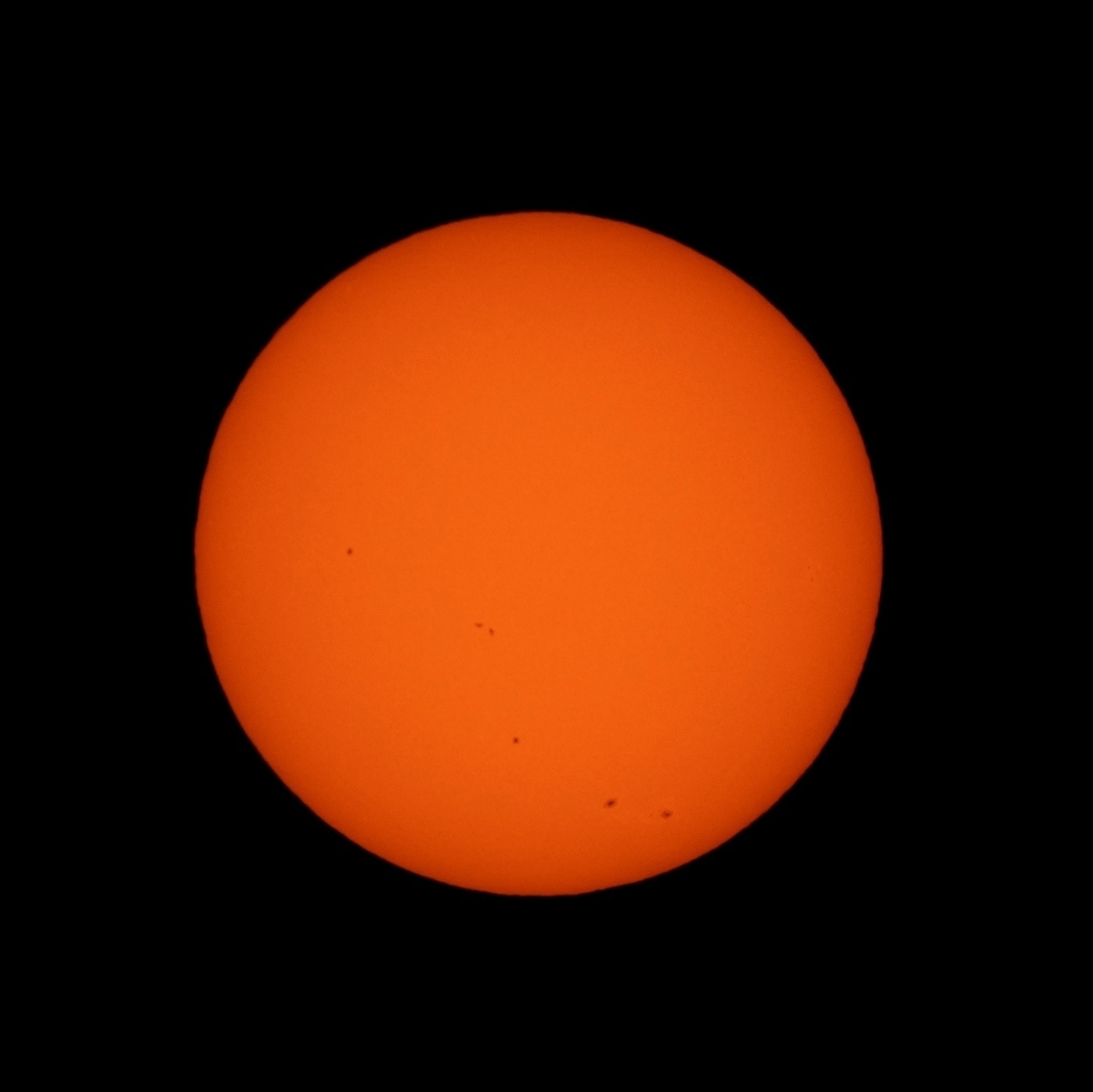
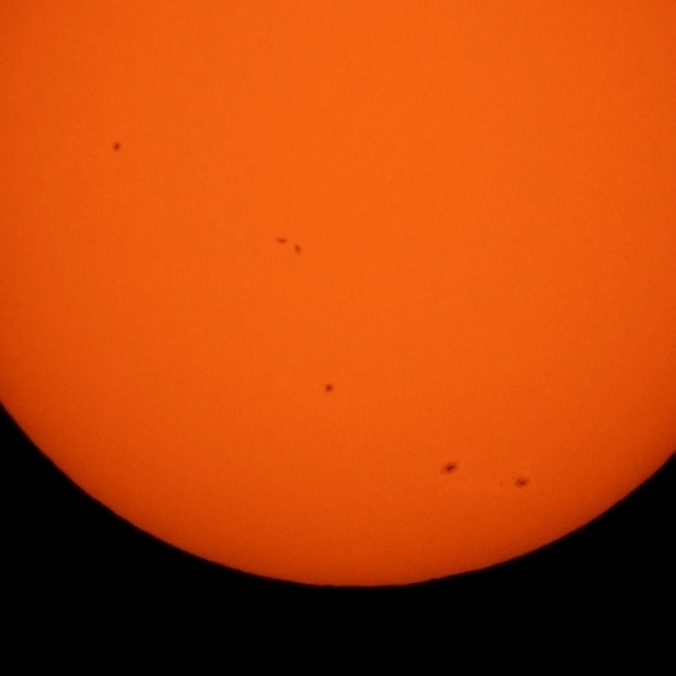
Orion
I am sure everyone agrees that Orion is the most recognizable and the most beautiful constellation in the night sky. Along with all the bright stars, there are many deep sky objects to explore. I have been waiting for several months to get another chance to image all these interesting objects from Orion. It has been quite cloudy and rainy for many days and nights. There were some clear sky moments between the passing clouds on Friday and I could capture a few subs at 50mm focal length to capture the whole constellation. Not the best photo but, the Orion Nebula is quite obvious and so are horsehead and flame nebulae. Hope that there will be more clear nights to capture these at higher magnification some time soon.
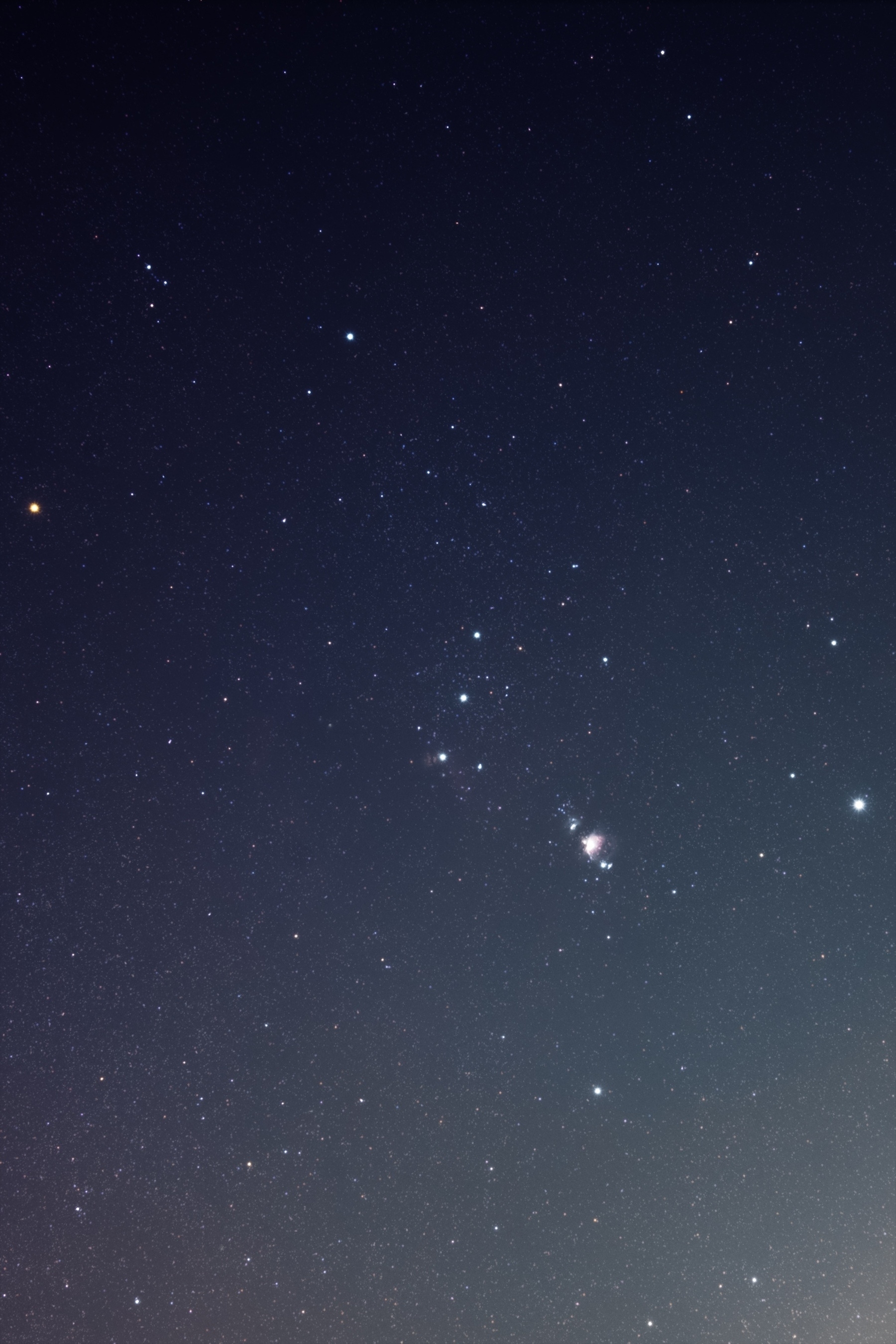
Remains of exploded stars
As the stars (of the size about 1 to 8 solar masses) age, they get bigger and become red giants. In their outer cooler shell, they start to accumulate elements of higher atomic number as a result of the nuclear fusion that fuels the stars. At a certain point, there is an explosion that expels the outer layers of the star out in space and the nucleus of the star becomes a smaller dwarf star that keeps shining. The expanding and glowing shell of the expelled gas from the explosion is called a planetary nebula and we can see many of these in the night sky using even a small telescope.
The appearance of these nebulae depends on our point of view. If we are viewing from the polar region of the star, it appears as a ring of nebulosity with the dwarf star in the clear central region. A good example of this is the Ring nebula (M 57) on the left. The white dwarf in the center can be seen if you zoom in on the image. If our point of view is from the equatorial plane, the remnant of the explosion appears as circular nebula without a clear center. The Dumbbell nebula (M 27) on the right is a good example of this view. Both these planetary nebulae formed about 7,000 to 10,000 years ago as a result of an exploded red giant star.
Both these images were taken using William Optics megrez 90 telescope attached to Nikon Z6 camera. Total exposure of 45 minutes (1 min subexposures). Processed using SIRIL and Adobe Photoshop.
Andromeda Galaxy
The Andromeda Galaxy, also known as Messier 31, M31, or NGC 224 and originally the Andromeda Nebula, is a barred spiral galaxy approximately 2.5 million light-years from Earth and the nearest major galaxy to the Milky Way. ... From Wikipedia
This is one of those objects that can be easily seen with naked eyes under dark skies. I have seen it many times that way and with the aid of a telescope. It still appears as a smudge with small amateur telescopes. Unless the astrophotography techniques of long exposures and stacking is applied, its beauty is not apparent. Last year, during the pandemic I started playing around with astrophotography and this was one of the first targets that I imaged. Here are 3 images taken over the last few months and it is obvious that my technique is getting better with time. I like seeing the dust lanes making the spirals of the galaxy. Hoping to get better images of M31 again later in the year when it rises again in the East.
Dark skies of Acadia National Park
Being in the Northeast USA which has some of the most densely populated areas, there is a lot of light pollution. It is hard to find really dark skies that are ideal for astronomy but, that changes when one travels out to Maine. We have vacationed in Bar Harbor near Acadia National Park over many summers and I have seen some of the darkest skies in Acadia NP. On a moonless night, the Milky Way galaxy just pops out at you. I have tried taking Milky Way photos several times but, the 2020 version is probably the best partly because of a new camera (Nikon Z6) that has a more sensitive sensor. Looking forward to going back to Acadia this year again and planning to do more astrophotography.
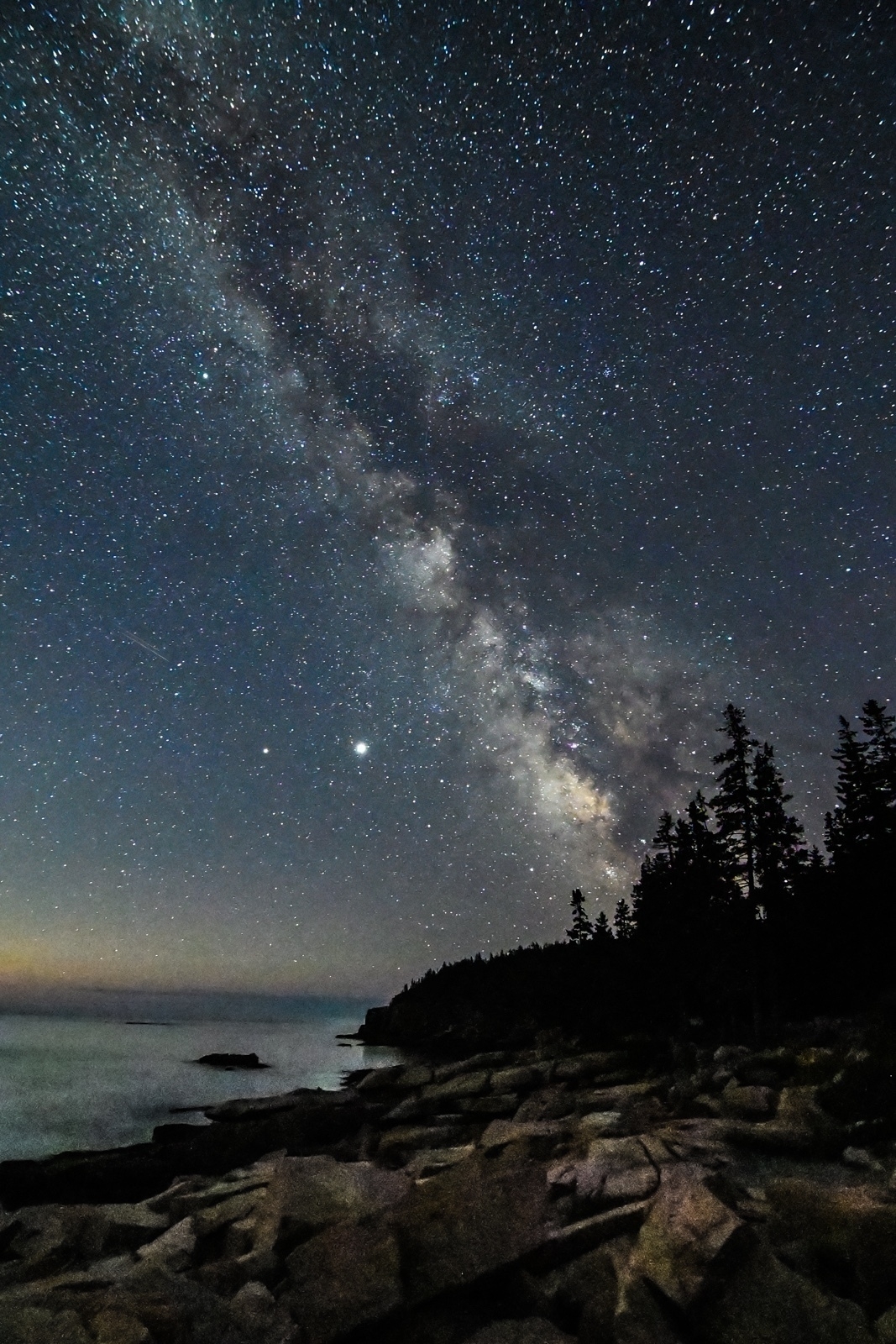
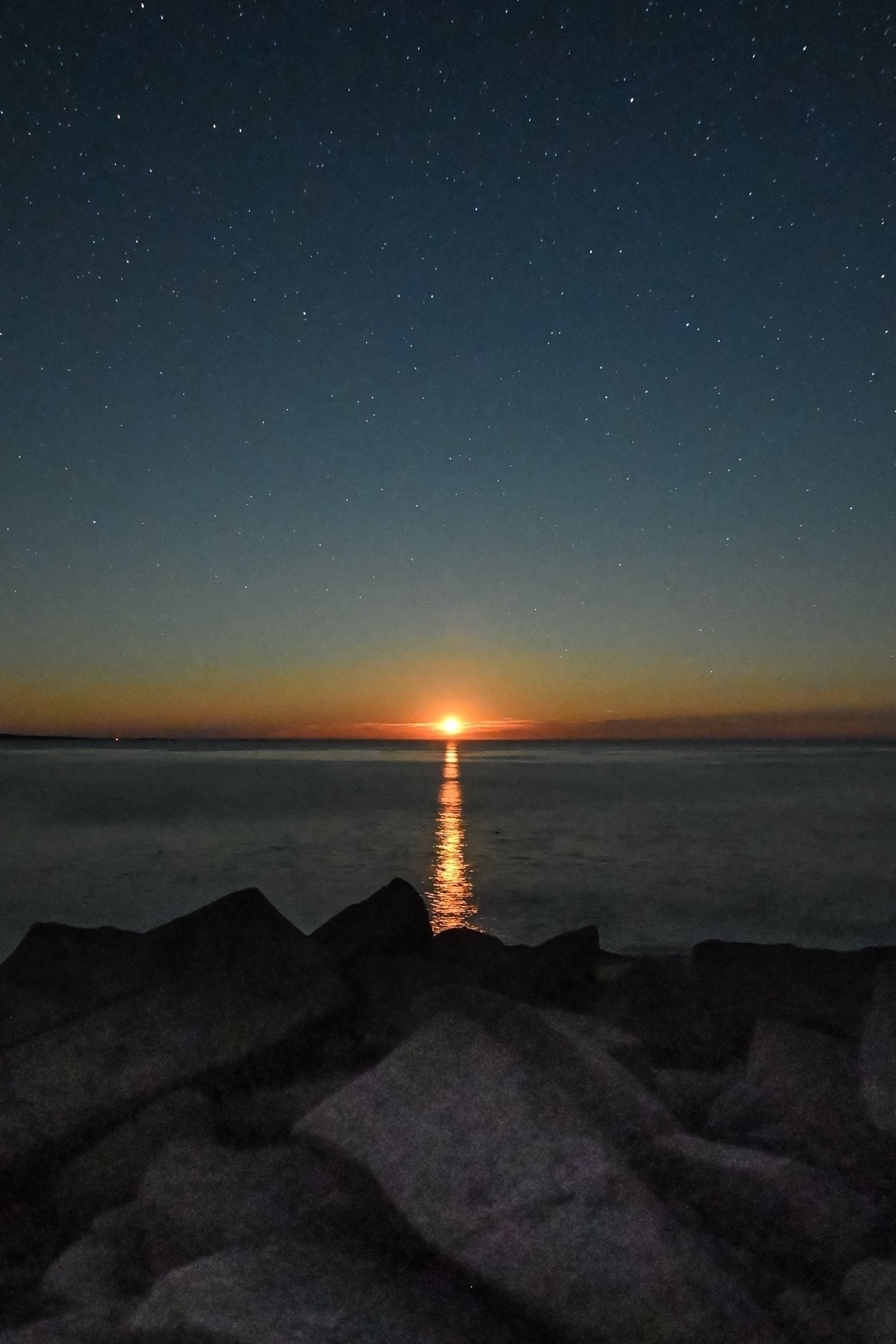
Venus in 2020
Venus put on a great show in the evening sky during the Spring and Summer of 2020. It was joined by other planets like Mercury, Mars and Uranus and also our Moon. It also made nice cameo appearances with constellations like Pleiades. Here are photos of some of those instances.
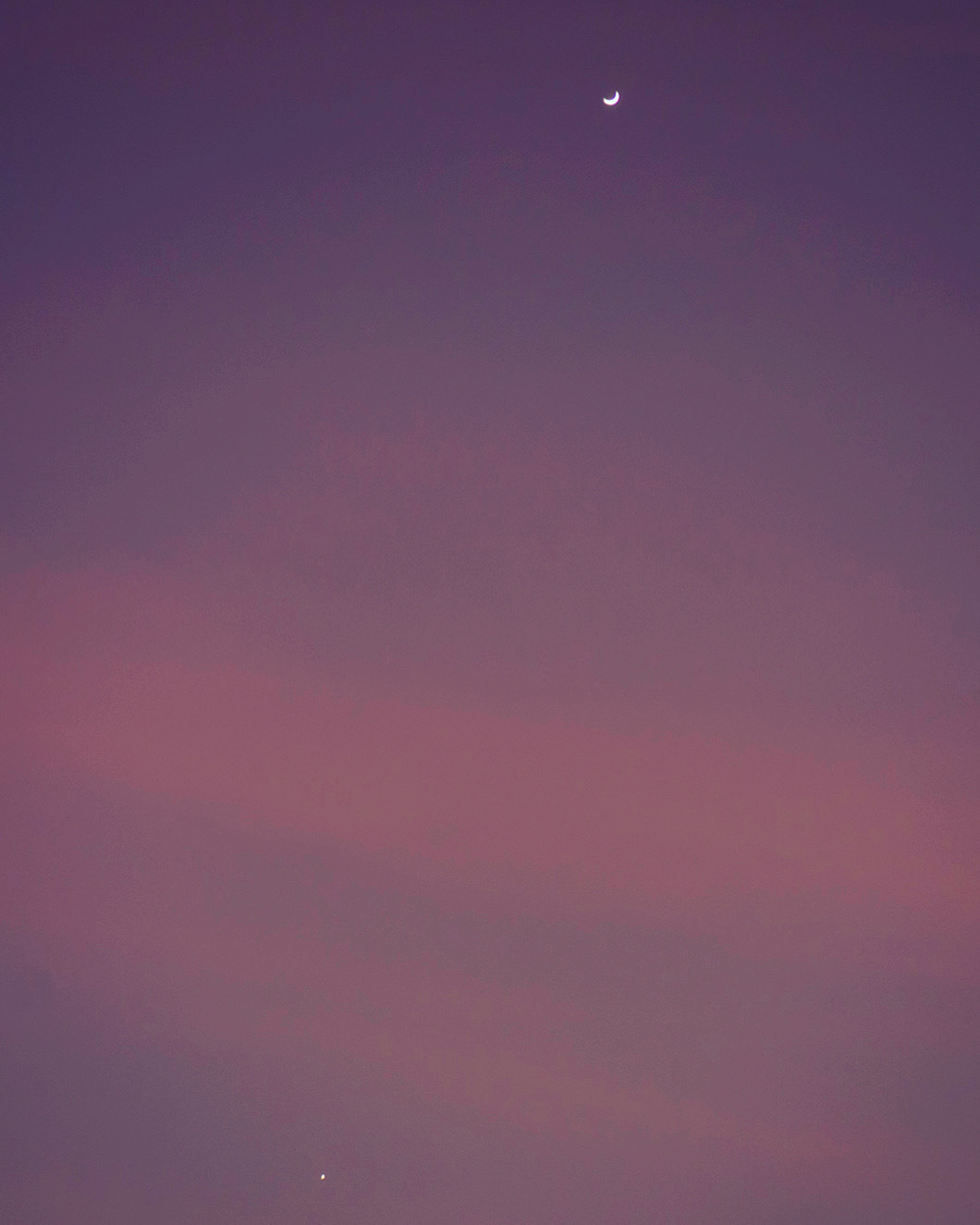
Here Venus is at the top seen as a crescent with Mercury at the bottom of the frame.
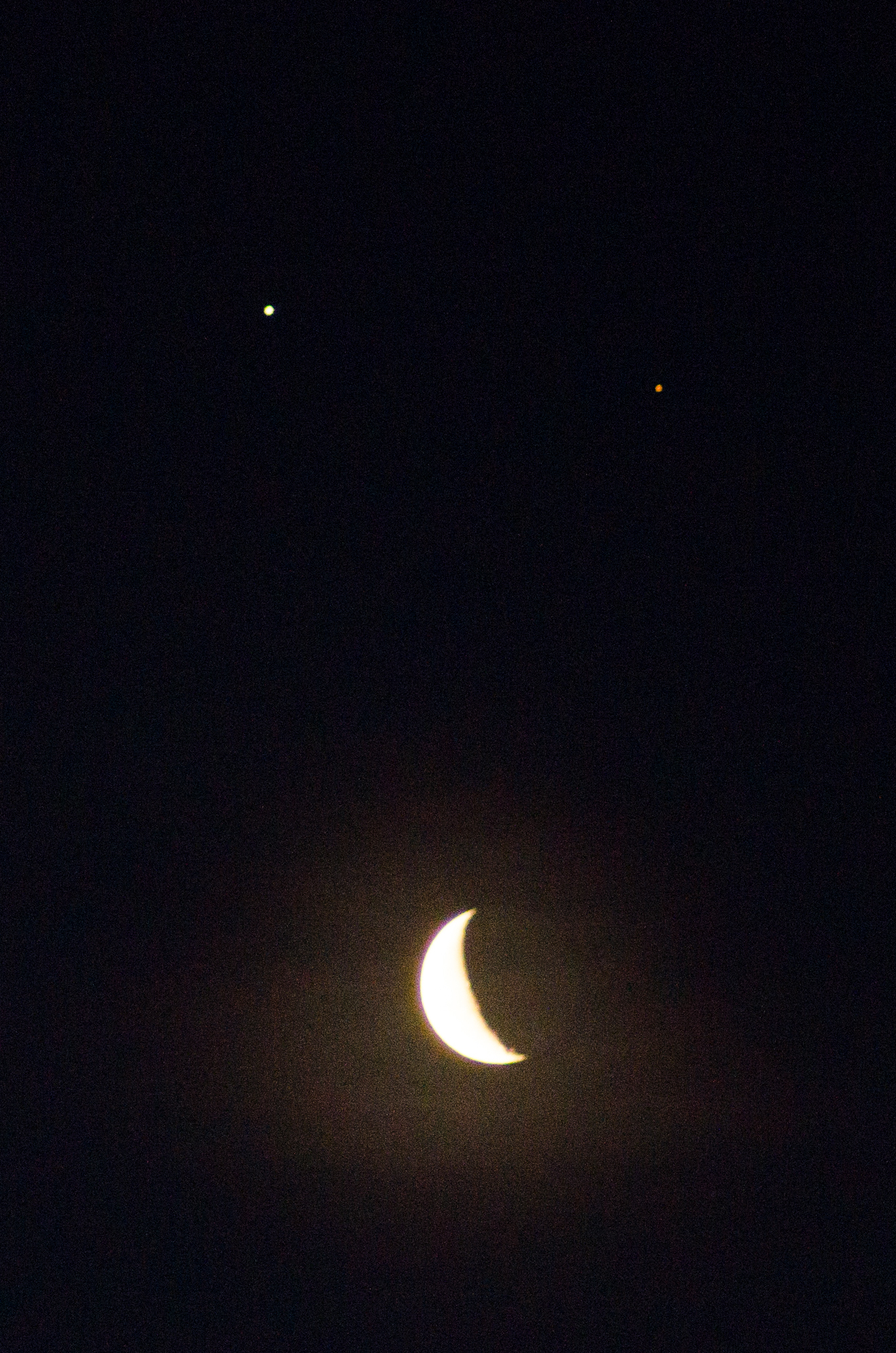
Venus seen with Mars and the Moon making a lopsided smiley.
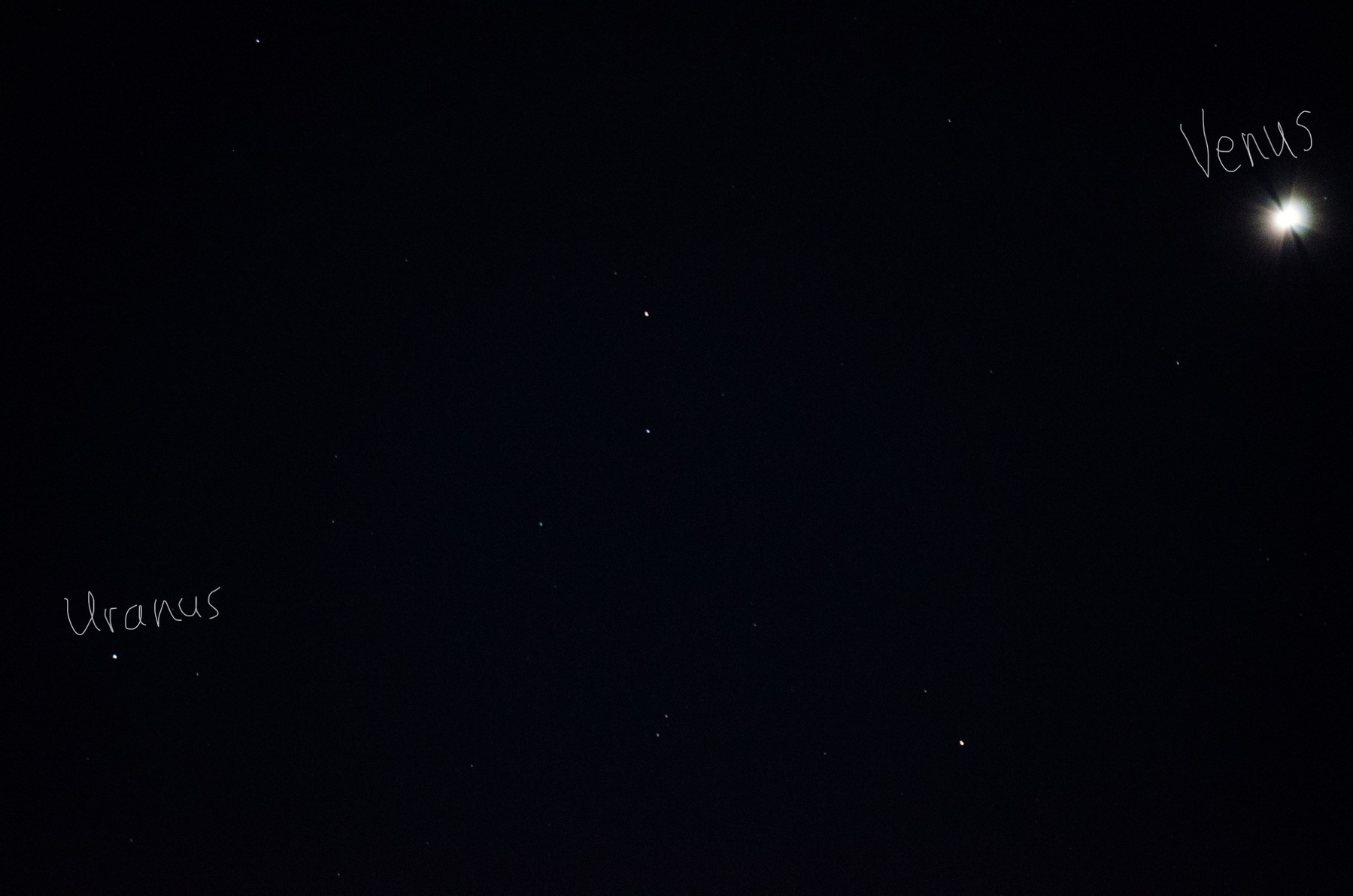
Here is Venus and Uranus.
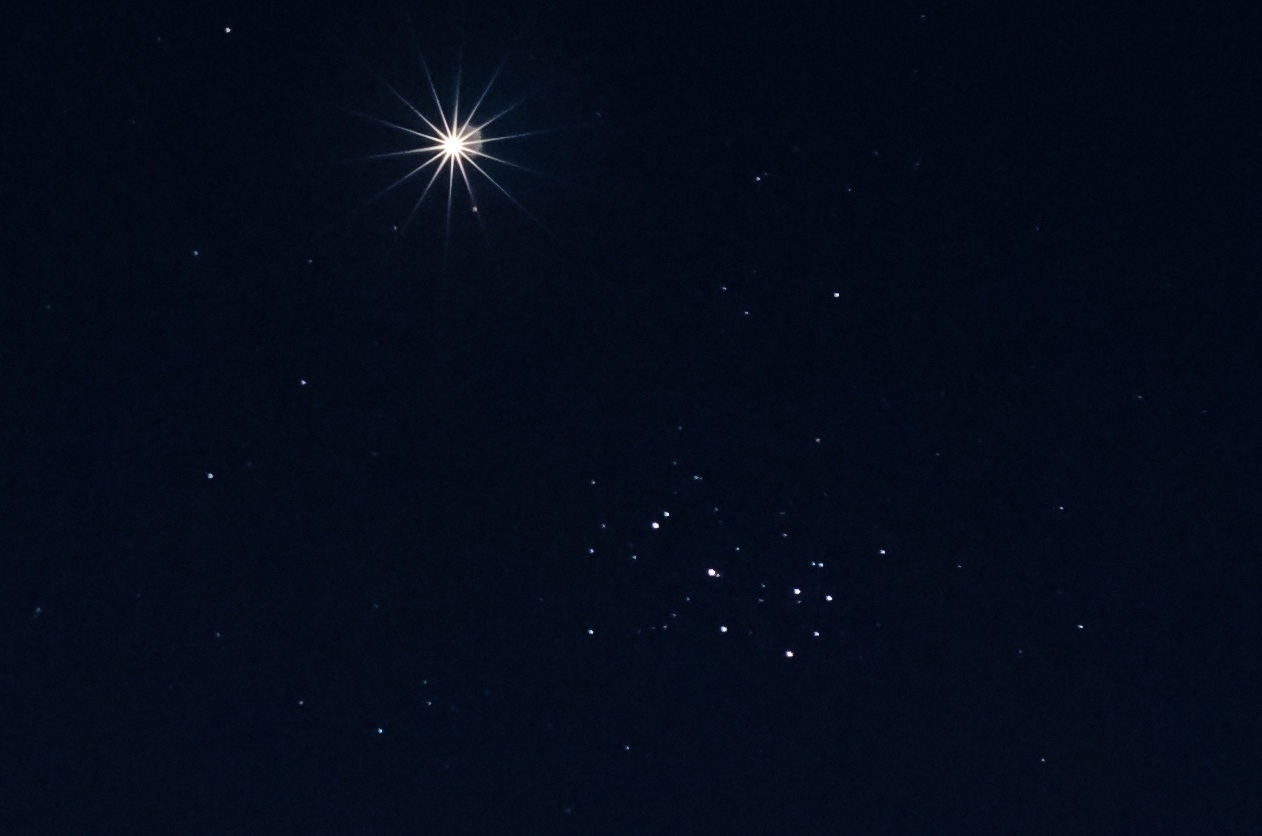
Venus shining near the star cluster of Pleiades.
Comet Neowise
It was really nice to have Comet Neowise stay around for a few weeks in Summer. There were many opportunities to view it without clouds or moon in the sky. Here are a couple more photos from July 2020.
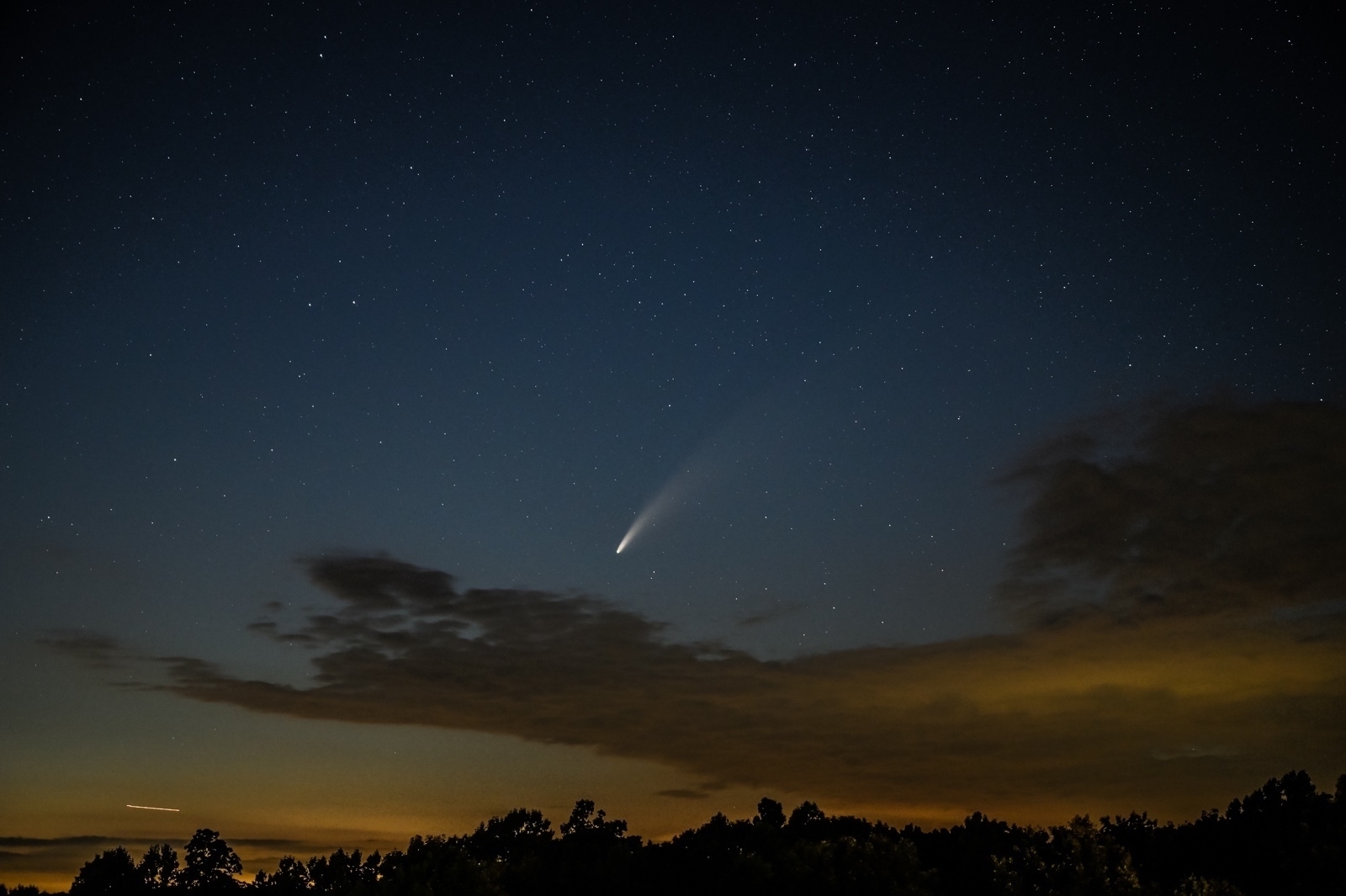
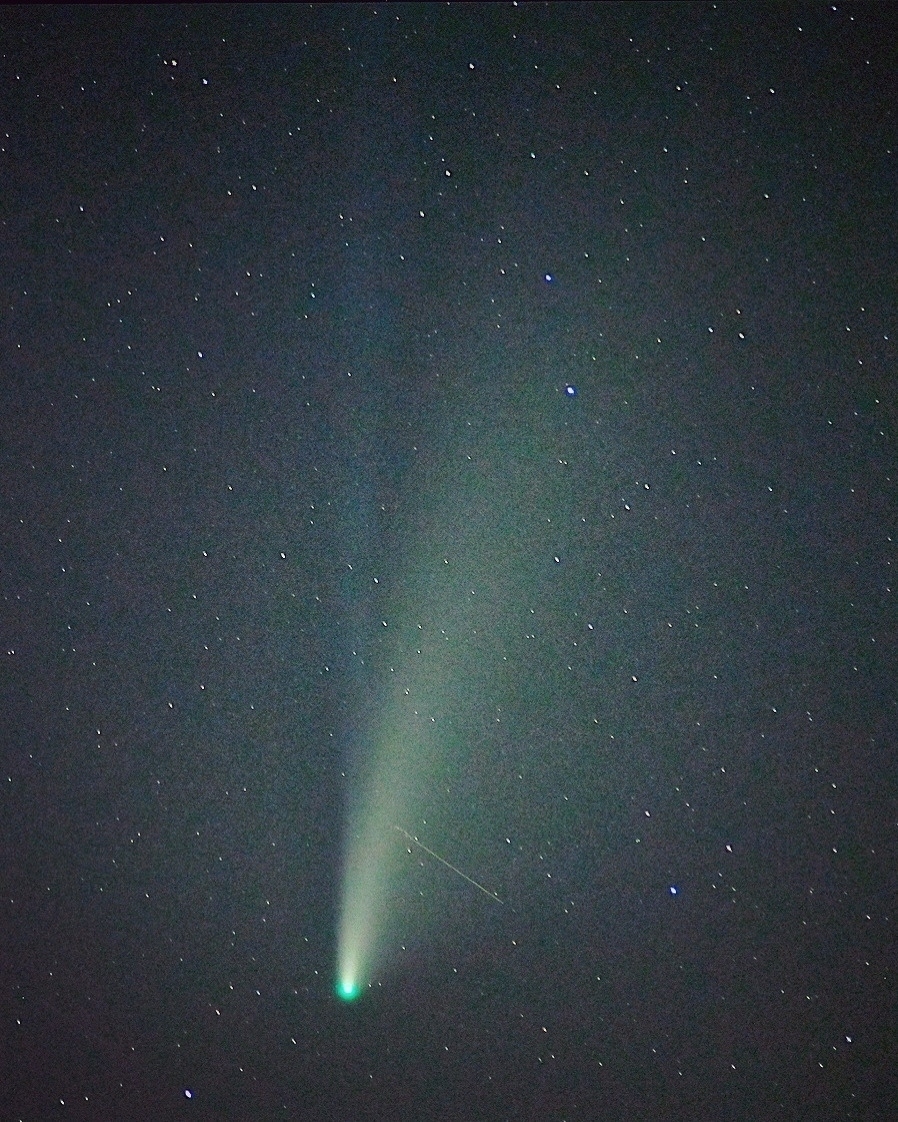
Astrophotography in 2020
Last year turned out to be great for astrophotos. Due to the COVID pandemic, there was a lot more time available in the evenings with a significant drop in kids’ activities that require me to drive them around. I didn’t post these photos here so far but, am going to make a series of posts over the next few days with these pictures taken over the last year or so.
Starting with comet Neowise that was gracing the night skies in Summer. This photo was taken in the early morning before sunrise at Lake Pattagansett. It was a windless morning and I was able to get that perfect reflection of the comet in the lake.
